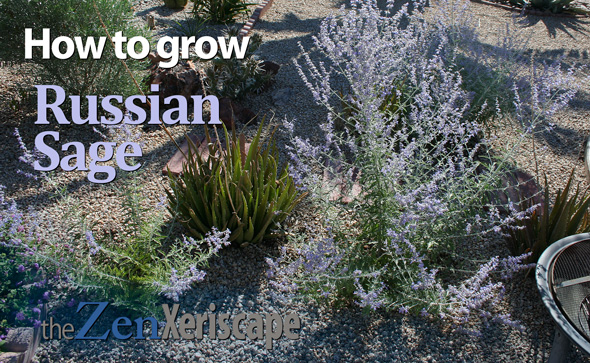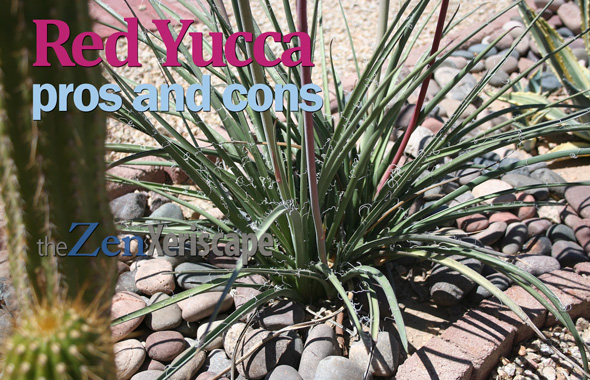Bougainvillea are colorful tropical plants that are also surprisingly drought-tolerant. In addition, they love extreme summer heat. Once established, these plants are relatively carefree. To ensure your success with these vibrant plants, here’s how to care for bougainvillea.
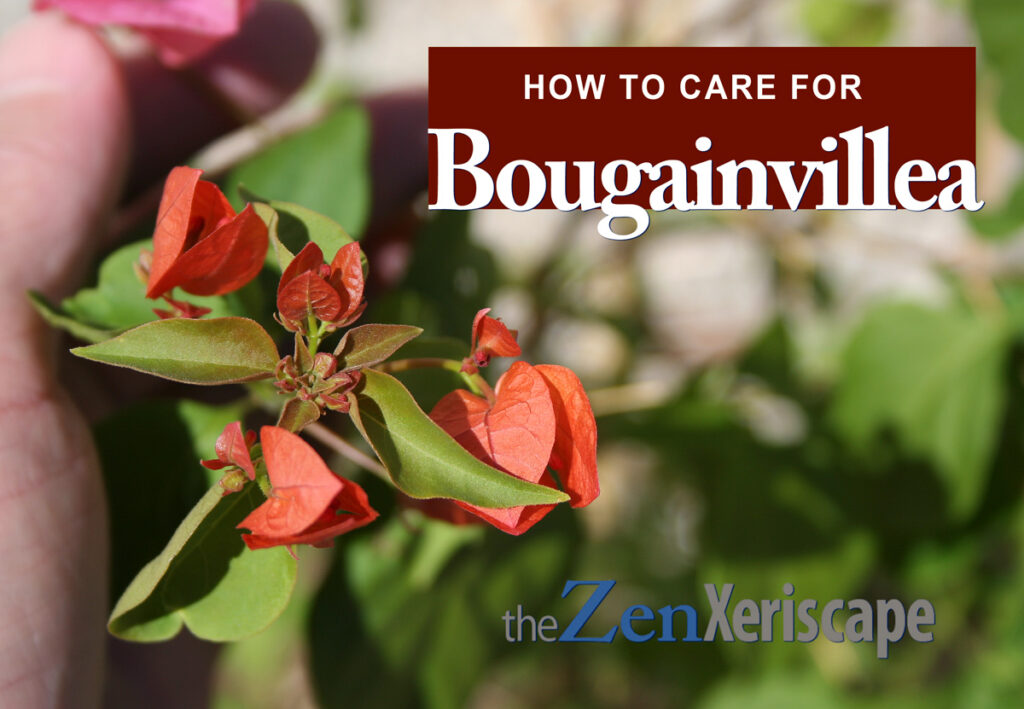
of color, even in arid landscapes.
It is drought-tolerant,
and thrives in the summer heat!
Photo by Doug Martin
Description of bougainvillea plants
Bougainvillea are viny, woody, and thorny plants that can be grown as a bush or tree. Or, its long branches can be trained as vines that grow along a wall or trellis, for a dramatic panel of color.
They produce abundant, vibrant bursts of color, which are really the papery leaves that surround smaller white or off-white flowers. The colorful leaves are called bracts.
The plant originates from tropical South America where it thrives in the hot sun. Fortunately, the highly adaptable bougainvillea can be grown in more arid, less humid climates like the Mediterranean, where it will also thrive.
Today, bougainvillea is commonly seen throughout the varied southwestern and southern United States growing regions. If you’re still undecided if you should try a bougainvillea in your drought-tolerant landscape, read about the pros and cons of a bougainvillea!
View all the benefits of a 30-day trial of Prime! (As an Amazon Associate, I earn a commission from qualifying purchases.)
How to care for bougainvillea
Plant bougainvillea in full sun
Bougainvillea plants thrive in full sun. Choose a location where your bougainvillea receives at least six-hours of sunlight. The more sun these plants have access to, the more flowers they will produce.
Without enough sun, this plant can get leggy stems, exhibit slower growth, and will flower less.
Water infrequently, but deeply
This plant is drought-tolerant, and prefers its soil to dry out completely before watering. Once established, bougainvillea can be watered infrequently, but deeply.
If you’ve just planted a bougainvillea, water it more often until it has a well-developed root system. Check the top few inches of soil, and if it feels completely dry, water it thoroughly.
In addition, watch for wilting or curling leaves, which might be a sign that it needs a thorough watering. But, always check the soil first, and be sure that the top few inches are dry before adding water.
I have heard of healthy bougainvillea plants surviving in the southwestern United States with only one deep watering per month. However, always look for those tell-tale signs of stress from a lack of water. In my case, I water mine deeply two-to-four times per month.
And to get small wood cuttings started, water almost every day. But before watering, check the soil and if feels dry, then water!
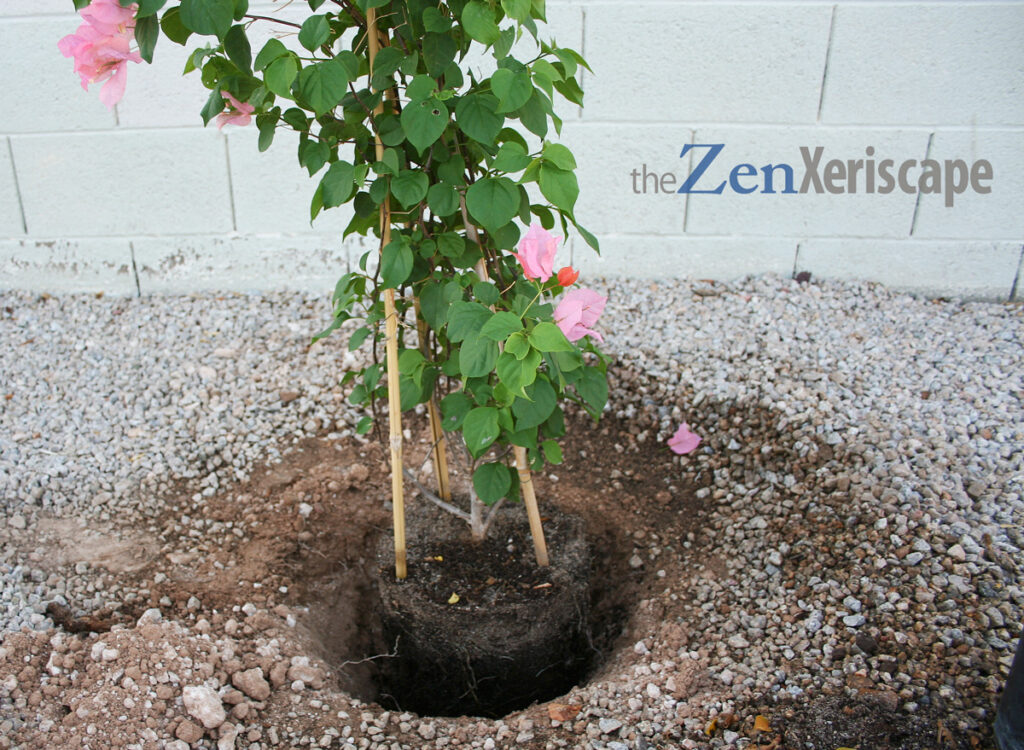
To ensure healthy root development,
dig the width at least twice the diameter.
Photo by Doug Martin
To enhance your outdoor landscape and living space, explore unique lighting and patio furniture on Amazon. (As an Amazon Associate, I earn a commission from qualifying purchases.)
Plant in well-draining soil
Whether you are planting your bougainvillea in a container or directly in the soil, be sure the soil drains well. For this plant, ponding water or waterlogged soil can quickly lead to root rot.
An ideal mixture would include an organic garden soil, mixed with sand and clay. Here in southern Arizona, that’s the combination I use to create a well-draining soil.
However, sand and clay alone will not provide adequate drainage—it also needs that organic garden soil to promote a healthy ecosystem and improve the structure of the soil. Sand and clay alone can turn into a poorly draining mud that gets extremely hard when it dries out.
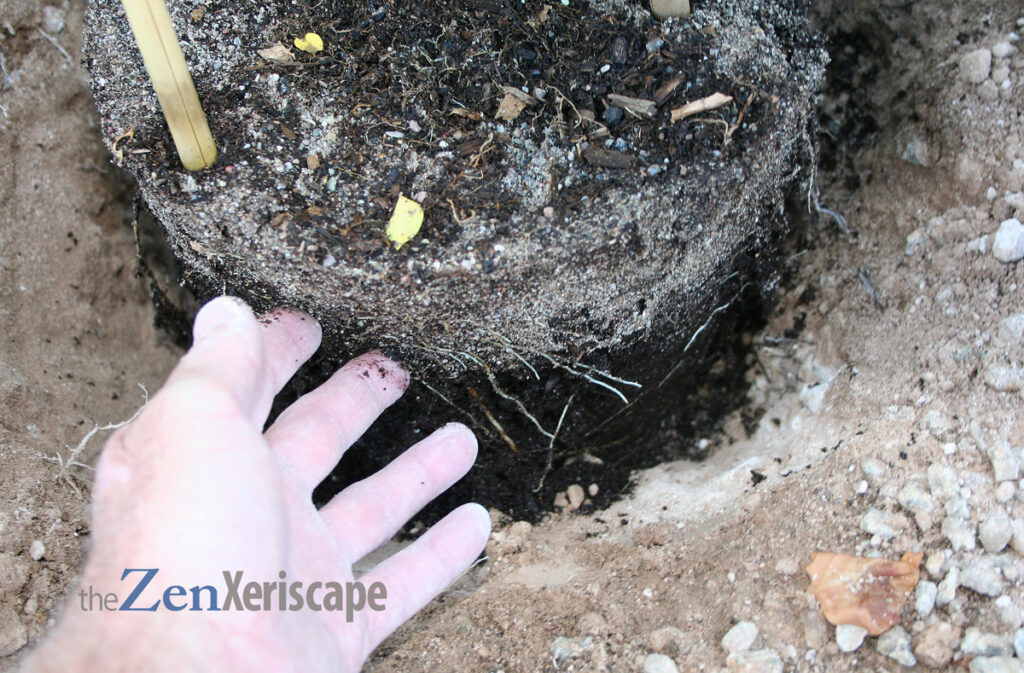
Don’t tease out the thin, fibrous roots
very much. For best results,
leave the root ball undisturbed.
Photo by Doug Martin
When in pots, it prefers to be root-bound
If you’re growing your bougainvillea in a container with holes, don’t repot too often. This plant prefers to be root-bound, which encourages more flowers and colorful bracts.
If you do repot, choose the next largest size, so its roots can quickly adapt and fill up the extra space.
Soil that has a slightly acidic pH
Ideally, bougainvillea plants prefer soil that has a slightly acidic pH. To slightly acidify your soil, add elemental sulfur which will slowly acidify soil. Or, for faster results, use aluminum sulfate, but beware of adding too much, too fast.
Other ways to acidify soil is by using peat moss, compost, or pine needles. Hopefully, the organic garden soil might provide enough acidity.
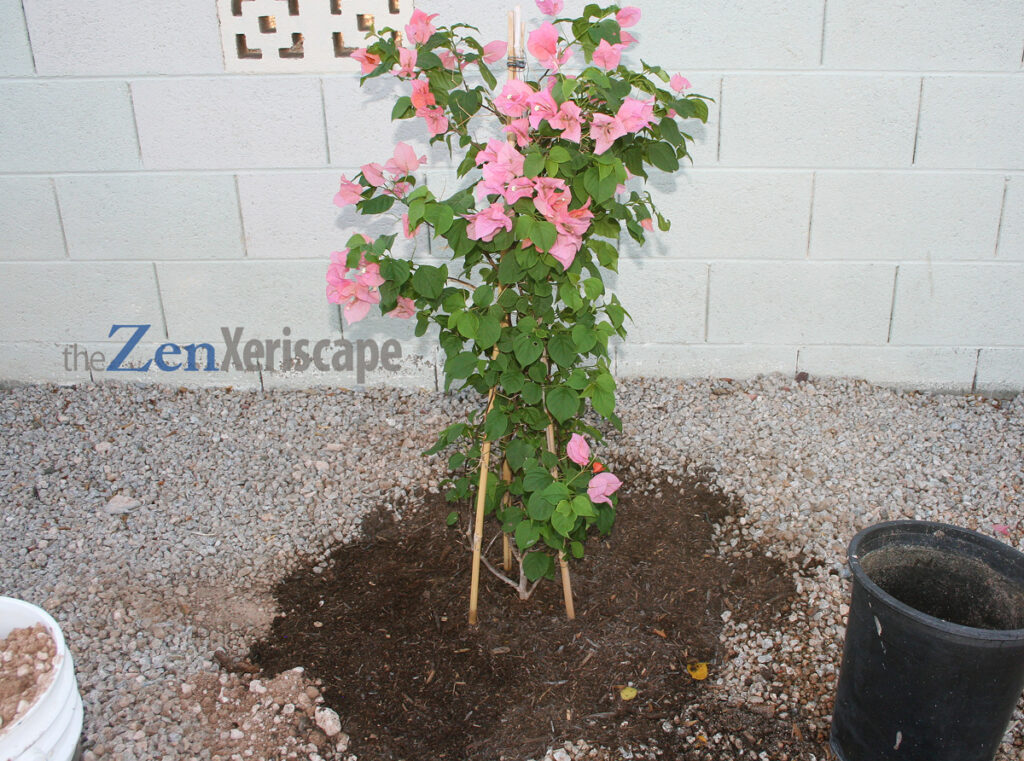
Photo by Doug Martin
For your convenience, have Amazon deliver your organic potting soil right to your front door! They have a wide selection. (As an Amazon Associate, I earn a commission from qualifying purchases.)
Fertilizer
In general, a well-balance fertilizer is ideal to encourage good bougainvillea growth. For instance, a 10-10-10 mixture, with equal parts of Nitrogen (N), Phosphorus (P), and Potassium (K) works well.
However, to encourage more flowers, use a mixture that contains more Phosphorus (P), which is the middle number. For instance, you might see a 6-8-10 fertilizer mixture, which should encourage more blooms.
Pruning bougainvillea
All woody plants, including bougainvillea, benefit from regular pruning. For this plant, pruning encourages new stem growth as well as more blooms.
The best time to bloom in spring or right after a bountiful cycle of blooming. In addition to promoting fuller growth and flowering, pruning allows you to shape your bougainvillea into a desired form. Shape it into a bush, or a tree, or a vine the cascades over a wall or across a trellis.
Cut the stem just above a leaf node—I think that’s true with all woody plants. Over time, those small bits of pruning can create a stunning focal point in your drought-tolerant landscape.
Best temperatures and hardiness zones
As a tropical plant, bougainvillea does best in warmer climates. In fact, these plants thrive in intense summer heat, which makes them ideal for the southern and southwestern United States.
They thrive outdoors year-round in USDA hardiness zones of 9-to-11. However, if you live in cooler climates, you can enjoy your bougainvillea in a container—just bring it inside when temperatures dip to freezing or below.
And, if you live in zone 9 (like I do—9b), be prepared to protect your bougainvillea in the event of a winter frost.
After you bring home your bougainvillea, browse the wide variety of gardening tools available on Amazon! (As an Amazon Associate, I earn a commission from qualifying purchases.)
TAKEAWAYS:
How to care for bougainvillea
Bougainvillea is a hardy, drought-tolerant plant that thrives in hot temperatures. It requires little maintenance, other than regular light pruning and periodic fertilizations.
But, for that little amount of work, you will yield a magnificent plant that brings vibrant color to your drought-tolerant landscape.
Content and photos by Doug Martin and The Zen Xeriscape


